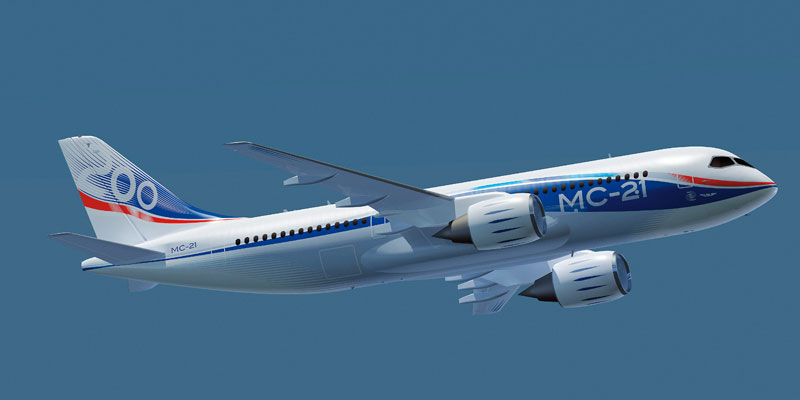| MC-21 got 190 orders in 2010 |
|
Last year became a impressive milestone for Irkut MC-21 programme to develop a new-generation short/medium-haul airliner. In July, when Irkut presented for the first time a full-scale mock-up of a 20-m-long section of the fuselage with pilots cockpit and passenger cabin at Farnborough airshow, MC-21 got its first orders.
Malaysian investment company Crecom Burj Resources became the launch customer of the MC-21 and placed 50 firm orders (25 MC-21-200s and 25 MC-21-300s designed for 168 and 212 seats in the single-class tourist layout respectively). The contract is valued at $3 billion in list prices, with the delivery slated for 2016–2020. Later on, in September, an agreement on delivery of 50 airliners to the Russian Technologies state corporation that manages assets of a number of major Russian air carriers was signed. The planes are to be delivered between 2016 and 2022. So, by 2011, the MC-21 orderbook has grown up to 190 units. According to the developer, the MC-21 will one-up its closest foreign rival, the Airbus A320, in better efficiency, since its direct operating costs are expected to be 12–15% less, fuel efficiency 25% higher and maintenance costs 30% lower. This is to be achieved through using cutting-edge equipment and systems from major foreign manufacturers and a number of ingenious design and layout solutions. For instance, a large part of the airliner’s design, 35–37%, is composites, of which, in particular, the wing and empennage will be made in full. The most important component of the MC-21’s competitive edge concept is the comfort unprecedented for aircraft in the class. The MC-21’s cabin is Irkut President Oleg Demchenko estimates that the MC-21 programme can win the company up to 10% of the global 150–200-seat narrow-body airliner market. Leading Western companies, which joined the MC-21 programme, agree with him, believing the MC-21 output may exceed 1,000 aircraft. UAC President Alexey Fyodorov said, “The MC-21 is UAC’s priority as far as civil aviation programmes are concerned. The plants in There is little time left before the airliner’s maiden flight. Irkut plans that the first MC-21 will take to the skies in late 2014. If all goes to plan, its certification tests will have been complete by 2016 and then deliveries of early production-standard airliners to the launch customer will kick off.
|
